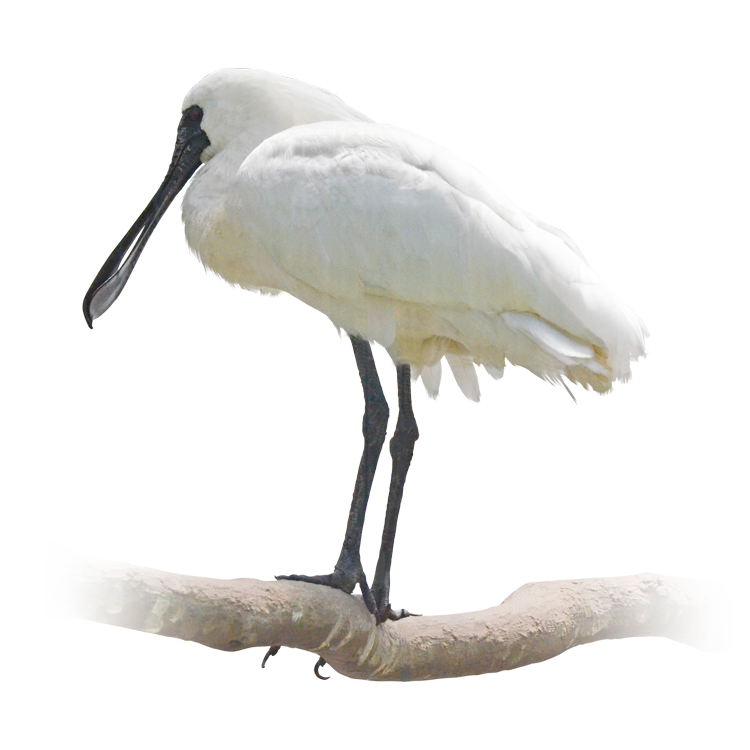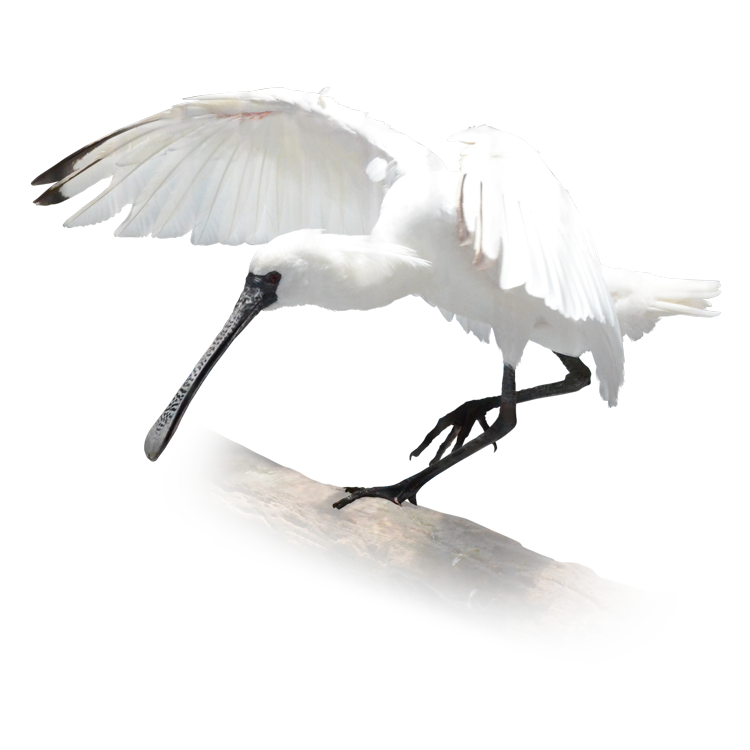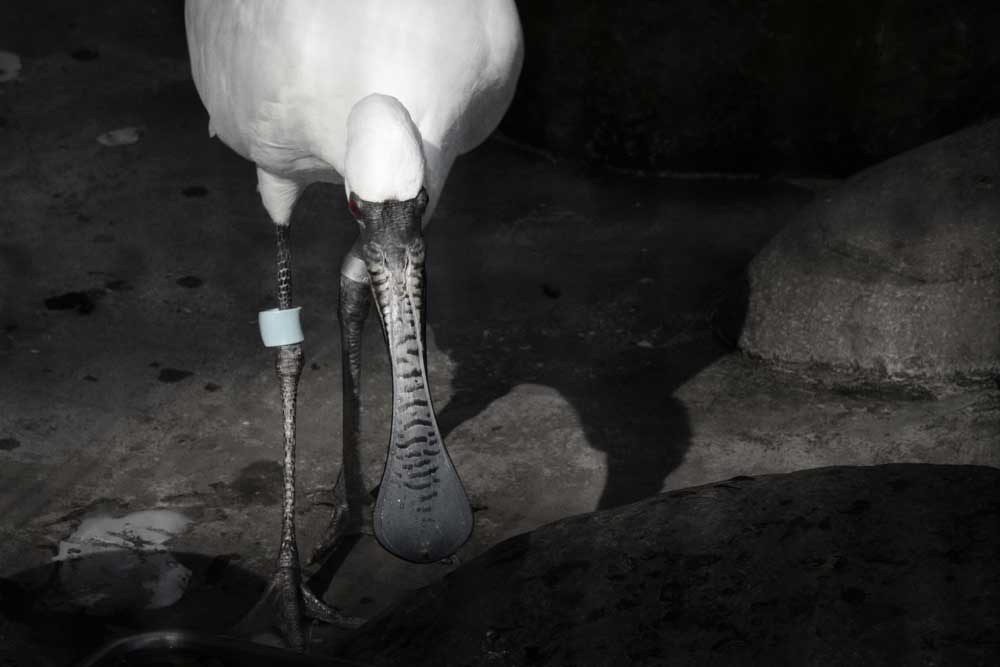
Platalea minor (Temminck & Schlegel, 1849)
ヘラサギのために解放された養魚場
Opening up Fish Farms for Spoonbills
全長77cm。ヘラサギの一種であり、東アジアの沿岸部に分布します。白い羽毛に覆われており、肌が剥き出しになる顔とクチバシ、脚部が黒いのが特徴で、夏羽は冠羽と喉や胸部が黄金色を帯びます。日本には九州に越冬地として飛来し、主に水田、河畔や干潟などで、11月から4月の間に見ることができます。
クロツラヘラサギ は2017年のIUCNによる評価で絶滅危惧IB類(EN)に指定されている希少種です。繁殖地域である黄海沿岸の開発等で数を減らし、1988年には300頭以下にまで個体数が減少しました。しかし各国で保全活動が進められ、2025年の発表データ調査で7000頭以上にまで回復しています。
特に保全活動が活発なのは台湾です。2025年のデータでは生息数の約6割は台湾で越冬生息していることを示しています。保全活動が盛んになったのは、1989年に台湾南西部にあるクロツラヘラサギの重要な生息地が、工業地帯として開発される計画が持ち上がったことがきっかけです。保全活動は徐々に実を結び、現在では政府の働きかけにより養魚業者が水採餌環境を提供するなどして生息地促進プログラムを遂行しています。 養魚場は通常はサバヒー(milkfish)などを養殖している池の一部を10月から4月の間に20cm 以下に保ち、クロツラヘラサギの為に解放することで、彼らは池に残った小魚や甲殻類を食べてくれるのです。まさに理にかなったやり方です。

Reaching 77 cm in length, this species of spoonbill is found along the coasts of East Asia. Its white feathers are characterized by black faces, beaks, and legs, while its summer plumage features golden-yellow crests, throats, and chests. It migrates to Kyushu, Japan, for its wintering grounds, where it can be seen primarily in rice paddies, riverbanks, and tidal flats between November and April.
The Black-faced Spoonbill is a rare species, listed as Endangered (EN) by the IUCN in 2017. Development along the Yellow Sea coast, its breeding grounds, has reduced its population, dropping to fewer than 300 individuals by 1988. However, thanks to conservation efforts in various countries, the population has recovered to over 7,000 individuals as of 2025.
Taiwan is particularly active in conservation efforts. 2025 data indicates that approximately 60% of the population winters there. Conservation efforts began in earnest in 1989, when plans were made to develop an important Black-faced Spoonbill habitat in southwestern Taiwan into an industrial area. Conservation efforts have gradually borne fruit, and now, thanks to government efforts, fish farmers are implementing habitat enhancement programs, including providing aquatic feeding habitats. Fish farms usually raise milkfish and other fish in ponds that are kept below 20cm in size between October and April, and then open these ponds to Black-faced Spoonbills, who then eat the remaining small fish and crustaceans in the ponds. It’s a perfectly reasonable approach.

参考文献
むなはく | むなかたの自然 | クロツラヘラサギ 2025年8月2日閲覧
“Black-faced Spoonbill population hits record high of 6,000” HKBWS. 2025年8月2日閲覧
“Black-faced Spoonbill” DataZone, BirdLife International. 2025年8月2日閲覧
クレーンツアートラベル | つるブログ | クロツラヘラサギ/黑面琵鷺 | (2025年3月3日閲覧) 2025年8月2日閲覧
“The Black-Faced Spoonbill’s Second Home” Ministry of Foreign Affairs, Republic of China. 2025年8月2日閲覧